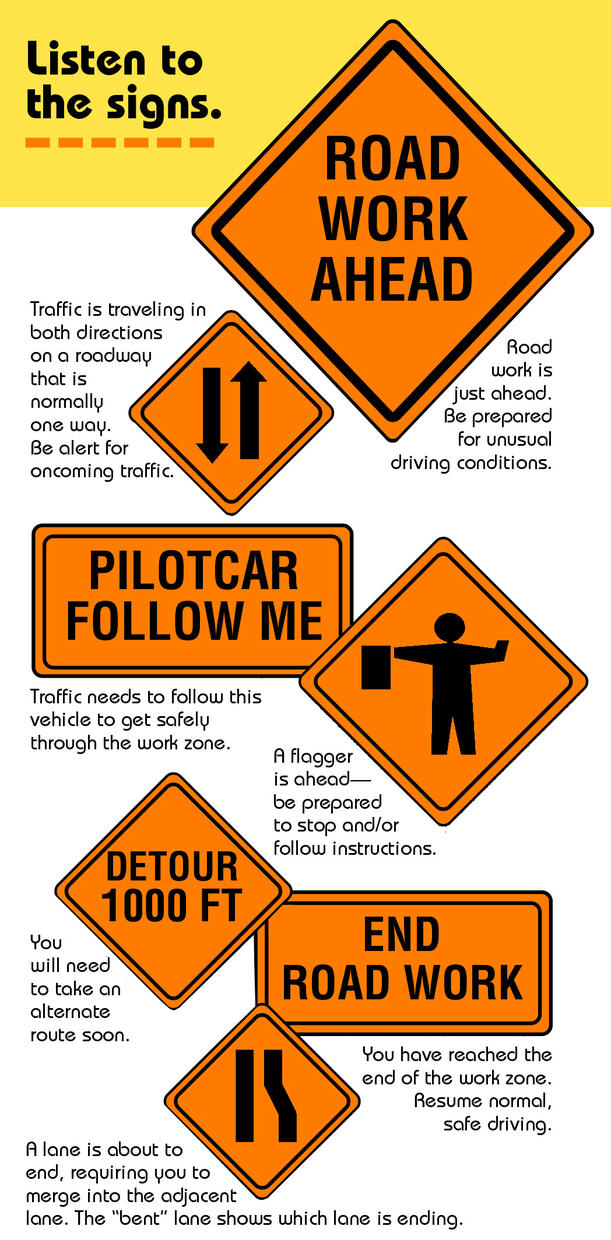10 Tips for Driving Safely in Work Zones

1. EXPECT THE UNEXPECTED. Normal speed limits may be reduced, traffic lanes may be changed, and people may be working on or near the road.
2. SLOW DOWN! Speeding is one of the major causes of work zone crashes.
3. DON'T TAILGATE. Keep a safe distance between you and the car ahead of you. The most common crash in a highway work zone is the rear end collision. So, don't tailgate.
4. KEEP A SAFE DISTANCE BETWEEN YOUR VEHICLE, CONSTRUCTION WORKERS AND THEIR EQUIPMENT.
5. PAY ATTENTION TO THE SIGNS. The warning signs are there to help you and other drivers move safely through the work zone. Observe the posted signs until you see the one that says you've left the work zone.
6. OBEY ROAD CREW FLAGGERS. The flagger knows what is best for moving traffic safely in the work zone. A flagger has the same authority as a regulatory sign, so you can be cited for disobeying his or her directions.
7. STAY ALERT AND MINIMIZE DISTRACTIONS. Dedicate your full attention to the roadway and avoid changing radio stations or using cell phones while driving in a work zone.
8. KEEP UP WITH THE TRAFFIC FLOW. Motorists can help maintain traffic flow and posted speeds by merging as soon as possible. Don't drive right up to the lane closure and then try to barge in.
9. SCHEDULE ENOUGH TIME TO DRIVE SAFELY AND CHECK RADIO, TV AND WEBSITES FOR TRAFFIC INFORMATION BEFORE YOUR TRIP. Expect delays and leave early, so you can reach your destination on time.
10. BE PATIENT AND STAY CALM. Work zones aren't there to personally inconvenience you. Remember, the work zone crew members are working to improve the road and make your future driving experience a better one.
Most States have a 511 Road condition app that you can download to your smart phone or tablet.






